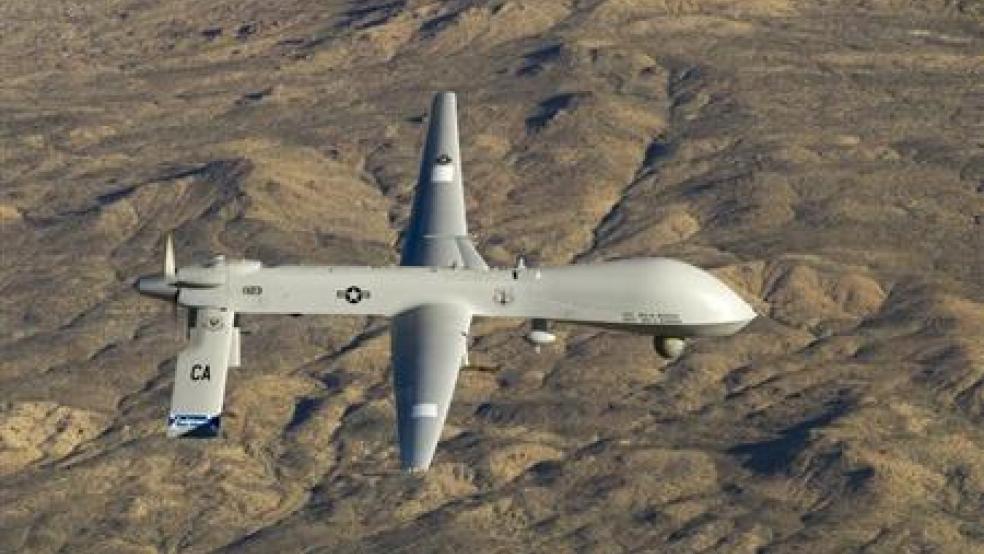Even as the world is experiencing a proliferation of smart, small, and inexpensive products in a widening range of fields, the Department of Defense continues to pursue a buying strategy of fewer but more exquisite systems. Our budget debate needs to shift. Rather than simply arguing about more money for legacy systems, we need to think through how we will gradually phase them out over the next decades while using the savings to shift to a new approach to war.
Today, the vast majority of U.S.procurement spending goes toward very mature weapons: F-35s, LRS-Bs, aircraft carriers, and systems that support them. These technologies came to the fore in the 1930s and ‘40s. Unfortunately, even massive investment in mature technologies brings only minor increases in capability. One oft-expressed rule of thumb is that the last 5 percent of capability adds 50 percent to the cost of a weapon.
Related: Has the Navy Wasted Billions on Its New Combat Ship?
This is of particular concern because of the rapid advances in robotics and artificial intelligence, additive manufacturing and nanoexplosives, composite materials and energy-reflecting coatings, and improved energy densities in gel fuels. Taken together, these technologies mean that long-range, autonomous, stealthy, precision weapons will soon be cheap and ubiquitous. These new systems will challenge the dominance of the last century’s weapons and change warfare dramatically at the operational and tactical levels.
Already, commercial firms are creating drones that use a variety of sensors to autonomously execute tasks ranging from agricultural spraying to ocean surveillance to air freight. With minor modifications, these drones can become improvised explosive devices (IEDs) that actively hunt U.S. forces. Because the systems are commercial, they are available to almost anyone.
Even small numbers of intelligent, mobile IEDs would be a major problem for U.S. forces — yet tech trends indicate we could face tens of thousands of such drones on the battlefield.
We’re several years past the ability to 3D-print a drone in a single day; researchers are now refining prototype systems that can print 25 to 100 times faster than that. A single small facility with only 10 such printers will soon be able to produce 1,000 drones a day. These will be autonomous weapons that can attack with precision to destroy vehicles, parked aircraft, fuel, and ammunition stores.
Related: The Navy Hunts for Its Next-Generation Nuclear Submarine
Nor are drones limited to the air. The U.S. Navy is investing inunderwater “gliding” drones that are projected to operate for five years without refueling. Current commercial versions sell for about $100,000 but costs are falling very rapidly. These underwater drones could be developed into self-deploying mines or torpedoes. In short, the presence of numerous inexpensive, autonomous air and sea drones will soon be an inescapable part of the battlefield.
In contrast, the United States is focusing on producing a very few exquisite systems. When fully operational, the F-35 will bring a leap in capability. However, a creative enemy might choose not to fight the F-35 in the air but instead send cheap drones to hunt them at their air bases. These relatively inexpensive drones will rely on sheer numbers. If an enemy prints 1,000 a day, he doesn’t care if 500 suffer in-flight failures. Nor does he care you shoot down another 300 near your airfield. He still has 200 hunting a couple of dozen F-35 revetments. If those are not available, the drones can autonomously switch their aim points to radar antennae, fuel points, or ammunition sites.
The United States cannot overcome swarms of autonomous weapons by increasing our production of old weapons. A parallel might be drawn with the U.S. Navy’s pre-World War II focus on battleships, which produced behemoths that were far more capable (and expensive) than their World War I predecessors yet proved largely helpless against the revolutionary new technologies of naval aviation.
Today, our own focus on improving the weapons of the past is leading us astray. As our weapons become ever more exquisite, we can afford fewer and fewer. Bomber proponents say we need 100 to 200 LRS-Bs, but a realistic appraisal of the last 40 years of U.S. aircraft development and production indicates we will purchase many fewer – perhaps as few as the 21 B-2s. Meanwhile, commercial firms are creating drones that can deliver precision fires at ranges over 1,000 miles.
Like previous technological revolutions, this one will roll out over the next decade or two. There is still time to change direction to meet it — just as the prewar Navy ultimately began to invest heavily in aviation, and won, instead of lost, the coming war
This article originally appeared on DefenseOne. Read more from DefenseOne:
Carter Heads to Europe, Seeking Help in Paris, Davos
This Is The Most Important Technology On the F-35
The ‘Staggering’ Civilian Costs of Iraq’s Fight Against ISIS




